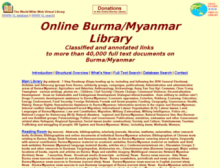Resource information
Throughout the Mekong region, large-scale development projects such
as hydropower dams, mines, conventional power plants, and mono-crop
plantations are displacing communities and limiting access to natural
resources. Several hydropower dams have already been built on the
Upper Mekong in China’s Yunnan Province, and the governments of
Cambodia, Laos and Thailand are planning eleven additional large dams
on the Mekong River’s mainstream. If completed, these dams would
not only destroy local ecosystems, but also reduce the ow of silt
throughout the Mekong River system, and block major sh migrations,
placing at risk over sixty million people who depend on the Mekong for
their food security and income.
It’s vital for citizens of all six nations who share the Mekong basin’s rich
resources to work together to promote greater accountability in
development planning. This is exactly what is happening among a new
generation of Mekong activists. Over the past nine years, alumni from
EarthRights International’s Mekong School representing communities
from the source to the mouth of the Mekong have been working together
to advocate for stronger human rights and environmental protection in
the region.
In sharing these reports from their communities, Mekong School Alumni
hope to inspire citizens throughout the Mekong region to consider the
social and environmental impacts of hydropower dams, mines, power
plants and other large development projects and to join together to
advocate for greater transparency and public participation in development
planning...." .....
CHINA:
Gaps in the Environmental Regulation of Transnational
Corporations: a Case Study of Cambodia’s Lower Sesan Dam
by Li Miao Miao...
MYANMAR:
A Legal Analysis of the Heinda Mine and its Impact on 12
Communities in Dawei
by Aye Mon Thu...
Livelihood and Environmental Impacts from the Shwe Gas
Pipeline in Nga Phe Township, Magway
by Khaing Mi Phue Aung...
The Hatgyi Dam Project and Potential Human Rights
Violations in Karen State
by Saw Lay Ka Paw...
THALAND:
Comparative Analysis of EIA Quality for Thai Overseas
Investment Projects: Dawei Special Economic Zone
and Hongsa Coal Power Plant
by Ashijya Otwong...
LAO PDR:
Potential Impacts on Women’s Livelihoods from the
Don Sahong Dam in Khong District, Champassak Province,
Lao PDR
by Dokkeo Sykham...
Potential Impacts of the Nam Ou 2 Dam on Local Livelihoods 99
in Luang Prabang, Lao PDR
by Luuk Nam Ou...
CAMBODIA:
Implications of the Anti-Dam Campaign and Eco-tourism 112
Initiative in the Araeng Valley, Central Cardamom Protected
Area, Cambodia
by Ham Oudom...
VIETNAM:
The Impacts of Dak Mi 4 Hydropower Dam on Downstream
Communities: Assessing the Right to Public Participation
by Tran Chi Thoi...
The Social, Health and Environmental Impacts of Limestone
Mining in Kien Luong District, Kien Giang Province, Vietnam
by Nguyen Khiem...
Asian Development Bank Safeguard Policies: Fact or Fiction? 170
The Case of the Northern Transmission Line Expansion Project
by Vu Hai Linh...
Epilogue
by Mat Carney.


